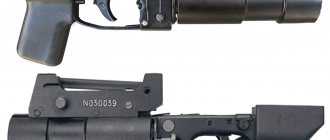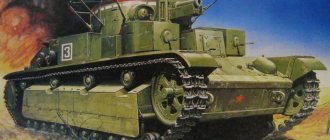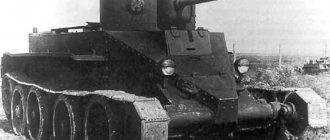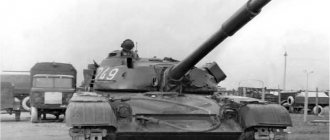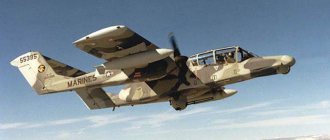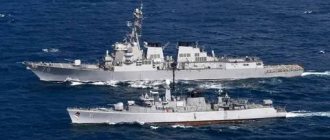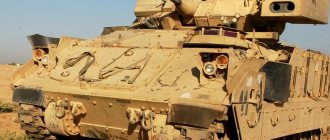Drones: purpose and device
Unmanned aerial vehicles (UAVs) are devices that move through the air without personnel on board.
They are capable of transporting cargo, taking photos and videos, striking targets and performing other tasks depending on the main purpose and area of application. According to the method of flight, they are of two main types: airplane and helicopter. The differences are clear from the name: the first have flat wings, the second have propellers.
The main elements of most UAVs are:
- Engine
- Rechargeable battery
- Controller
- Frame
- Wings (propellers)
The frame is the basis of the structure on which all the main components are installed. It is made from polymers or various light metal alloys.
The controller is the main device that regulates the flight. It contains a processor, a barometer for determining altitude, an accelerometer for measuring linear accelerations, a gyroscope for determining angular velocities, a magnetometer - a magnetic field sensor, a navigator, a signal receiving device from a ground control panel or satellites, and a device for recording and storing data.
History of the creation and development of UAVs
The history of drones began in Great Britain in 1933, when a radio-controlled aircraft was assembled based on the Fairy Queen biplane. Before the outbreak of World War II and in the early years, more than 400 of these vehicles were assembled and used as targets by the Royal Navy.
The first combat vehicle of this class was the famous German V-1, equipped with a pulsating jet engine. It is noteworthy that warhead aircraft could be launched both from the ground and from air carriers.
The rocket was controlled by the following means:
- an autopilot, which was given altitude and heading parameters before launch;
- the range was measured by a mechanical counter, which was driven by the rotation of the blades in the bow (the latter were launched by the incoming air flow);
- upon reaching the set distance (dispersion - 6 km), the fuses were cocked, and the projectile automatically went into dive mode.
During the war, the United States produced targets for training anti-aircraft gunners - Radioplane OQ-2. Towards the end of the confrontation, the first repeatable attack drones appeared - Interstate TDR. The aircraft turned out to be ineffective due to its low speed and range, which were due to the low cost of production. In addition, the technical means of that time did not allow targeted fire or combat at a long distance without being followed by a control aircraft. Nevertheless, there were successes in the use of machines.
In the post-war years, UAVs were regarded exclusively as targets, but the situation changed after the appearance of anti-aircraft missile systems in the army. From that moment on, drones became reconnaissance aircraft, false targets for enemy anti-aircraft guns. Practice has shown that their use reduces losses of manned aircraft.
UAV in combat
In the Soviet Union, until the 70s, heavy reconnaissance aircraft were actively produced as unmanned aircraft:
- Tu-123 "Hawk";
- Tu-141 "Swift";
- Tu-143 "Flight".
Significant aviation losses in Vietnam for the United States Army resulted in a revival of interest in UAVs.
Here tools appear to perform various tasks;
- photographic reconnaissance;
- radio intelligence;
- electronic warfare targets.
In this form, the 147E was used, which collected intelligence so effectively that it recouped the cost of the entire program for its development many times over.
The practice of using UAVs has shown significantly greater potential as full-fledged combat vehicles. Therefore, after the beginning of the 80s, the United States began to develop tactical and operational-strategic drones.
Israeli specialists took part in the development of UAVs in the 80s and 90s. Initially, US devices were purchased, but their own scientific and technical base for development was quickly formed. She has proven herself to be the best. The Israeli army also demonstrated the effectiveness of using UAVs in operations against Syrian forces in 1982.
In the 80-90s, the obvious success of aircraft without a crew on board provoked the start of development by many companies around the world.
In the early 2000s, the first strike vehicle appeared - the American MQ-1 Predator. AGM-114C Hellfire missiles were installed on board. At the beginning of the century, drones were mainly used in the Middle East.
Drone on the march
Until now, almost all countries are actively developing and implementing UAVs. For example, in 2013, the Russian Armed Forces received short-range reconnaissance systems, the Orlan-10.
The Sukhoi and MiG design bureaus are also developing a new heavy vehicle - an attack aircraft with a take-off weight of up to 20 tons.
Protection of aircraft components
UAV components and mechanisms operate under conditions of high loads when moving cargo, dusty environments, temperature changes, and strong friction of associated elements.
To increase the service life and reliability of operation of such expensive equipment, innovative lubricants are used, a single application of which reduces wear and protects the mechanisms throughout the entire life of the aircraft.
Anti-friction solid lubricant coatings MODENGY 1001 and MODENGY PTFE - A20 are applied to sliding friction units. They create a stable dry layer on the surface of parts, which reduces the coefficient of friction of contacting parts, increases the service life and reliability of the equipment.
MODENGY 1014 is used for processing fasteners. Thanks to this, the process of assembling and disassembling connections is simplified, friction in the threads is reduced, and protection against corrosion, scuffing and other damage is provided.
US unmanned vehicles
EQ-4
Developed by Northrop Grumman. In 2022, three vehicles entered the United States Army. They were sent to the UAE.
EQ-4
"Fury"
A Lockheed Martin drone designed not only for surveillance and reconnaissance, but also for electronic warfare. Capable of continuing flight up to 15 hours.
"Fury"
"LightingStrike"
The brainchild of Aurora Flight Sciences, which is being developed as a vertical take-off combat vehicle. It reaches speeds of more than 700 km/h and can carry up to 1800 kg of payload.
MQ-1B "Predator"
The development of General Atomics is a medium-altitude vehicle, which was originally created as a reconnaissance vehicle. Later it was modified into a multi-purpose technique.
MQ-1B "Predator"
UAV Application Areas
Unmanned aerial vehicles can find successful application in almost any area of modern life.
Problems that drones solve:
- Cargo delivery
- Fire and rescue missions - quickly identifying a source of smoke, extinguishing a fire, monitoring a fire situation
- Monitoring of hard-to-reach, dangerous and remote areas with the ability to create two- and three-dimensional maps of the area
- Photo and video shooting from the air, filming from drones
- Search for minerals
- Measurements of radiation levels, temperatures, sampling of air and other materials for analysis
- Patrolling roads, photographing violations
- Railway survey
- Identification of illegal activities: deforestation, unauthorized dumping, poaching
- Pollinating plants, planting tree seeds, bird watching
- Search people
- Destruction of targets in the military sphere
This is not a complete list of the work that drones can carry out. The range of their capabilities is expanding every day. They allow you to reduce the costs of monitoring various areas, transporting goods and other tasks.
Factors hindering the development of unmanned aerial vehicles are the undeveloped regulatory framework necessary for legislative regulation of the use of devices, the lack of standards for certification and standardization of UAVs, and an imperfect system for preventing collisions of several drones in a single airspace.
Unmanned vehicles of Russia
Yak-133
This is a development drone - an unobtrusive device capable of conducting reconnaissance and, if necessary, destroying enemy combat units. It is expected to be equipped with guided missiles and bombs.
A-175 "Shark"
A complex capable of all-weather climate monitoring, including on difficult terrain. Initially, the model was developed by AeroRobotics LLC for peaceful purposes, but manufacturers do not rule out the release of military modifications.
A-175 "Shark"
"Altair"
A reconnaissance and strike vehicle capable of staying in the air for up to two days. Practical ceiling - 12 km, speed within 150-250 km/h. At takeoff, the weight reaches 5 tons, of which 1 ton is the payload.
"Altair"
BAS-62
Civil development of the Sukhoi Design Bureau. In the reconnaissance modification, it is capable of collecting diverse data about objects on water and land. Can be used for monitoring power lines, mapping, and monitoring meteorological conditions.
BAS-62
Main types of Russian UAV models
Among the most used UAVs is the remotely piloted vehicle Iskorka , which relays to the operator a picture of a fire over a distance of several tens of kilometers. It is something between rocket-powered unmanned vehicles and conventional aviation. Thanks to the installation of infrared equipment and a television camera, the picture of emergency situations unfolds as if from under the wing of an aircraft.
Thermal imaging or television 24/7 image transmission is provided by the Pchela-1T , which provides information during working hours, thus showing a constant picture of changing conditions. Initially, this model was used in the military-industrial complex.
Unmanned helicopters of the ZALA are designed to monitor changes in meteorological conditions on the underlying surface. Their task includes television and thermal imaging of the area, accumulation and analysis of information, as well as relaying and clarification of coordinates. Particularly valuable is the fact that in emergency situations that pose a threat to human life, unmanned helicopters successfully perform their functions.
The advantages of helicopter UAVs are the ability to land in unprepared areas, automatic takeoff and landing, and the presence of computerized control that allows you to change the flight range and altitude.
Thus, the technical capabilities of UAVs are so high that they allow one not to be limited by the physiological characteristics of a person; they are convenient, economical, and multifunctional. This makes the UAV the most promising due to the ability to locally, permanently and remotely assess various conditions and relay to remote points to central control panels.
Israeli drones
"Mastiff"
The first UAV created by the Israelis was the Mastiff, which flew in 1975. The purpose of this vehicle was reconnaissance on the battlefield. It remained in service until the early 90s.
"Mastiff"
"Shadmit"
These devices were used for reconnaissance in the early 1980s during the first Lebanon War. Some of the systems used transmitted intelligence data in real time, while others simulated an air invasion. Thanks to them, the fight against air defense systems was successfully carried out.
"Shadmit"
IAI "Scout"
The Scout was created as a tactical reconnaissance vehicle, for which it was equipped with a television camera and a system for broadcasting collected information in real time.
I-View MK150
Another name is “Observer”. The devices were developed by the Israeli company IAI. This is a tactical vehicle equipped with an infrared surveillance system and a combined optical-electronic filling.
Unmanned vehicles in Europe
MALE RPAS
One of the recent developments is a promising reconnaissance and strike vehicle, which is being created jointly by Italian, Spanish, German and French companies. The first demonstration took place in 2022.
MALE RPAS
"Sagem Sperwer"
One of the French developments, which managed to prove itself in the Balkans at the end of the last century (1990s). The creation was carried out based on national and pan-European programs.
"Sagem Sperwer"
"Eagle 1"
Another French vehicle, which is designed for reconnaissance operations. It is assumed that the device will operate at altitudes of 7-8 thousand meters.
HALE
A high-altitude UAV that can fly up to 18 kilometers. The device can survive in the air for up to three days.
In Europe as a whole, France takes the leading role in the development of unmanned aircraft. New products are constantly appearing all over the world, including modular multifunctional models, on the basis of which various military and civilian vehicles can be assembled.

